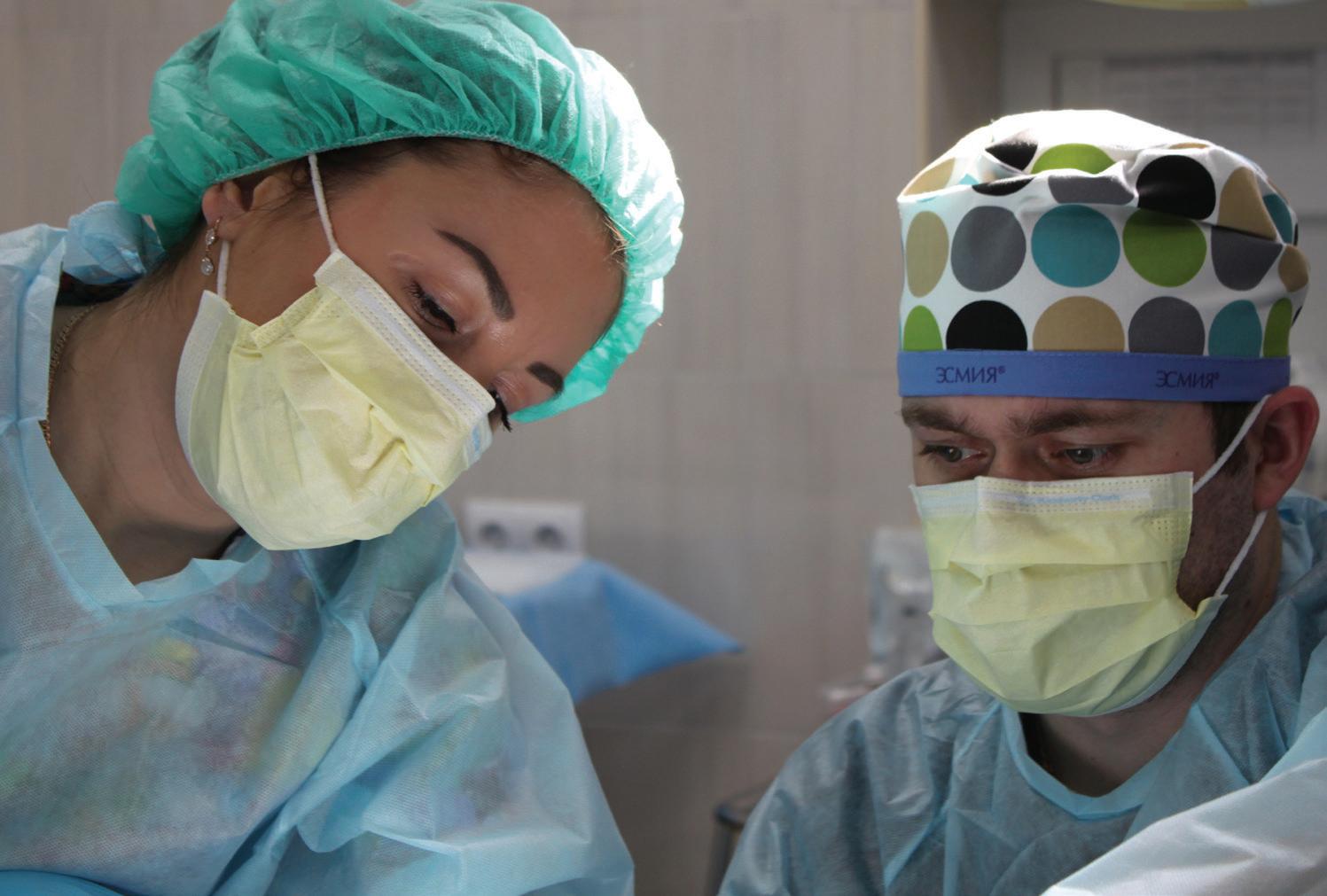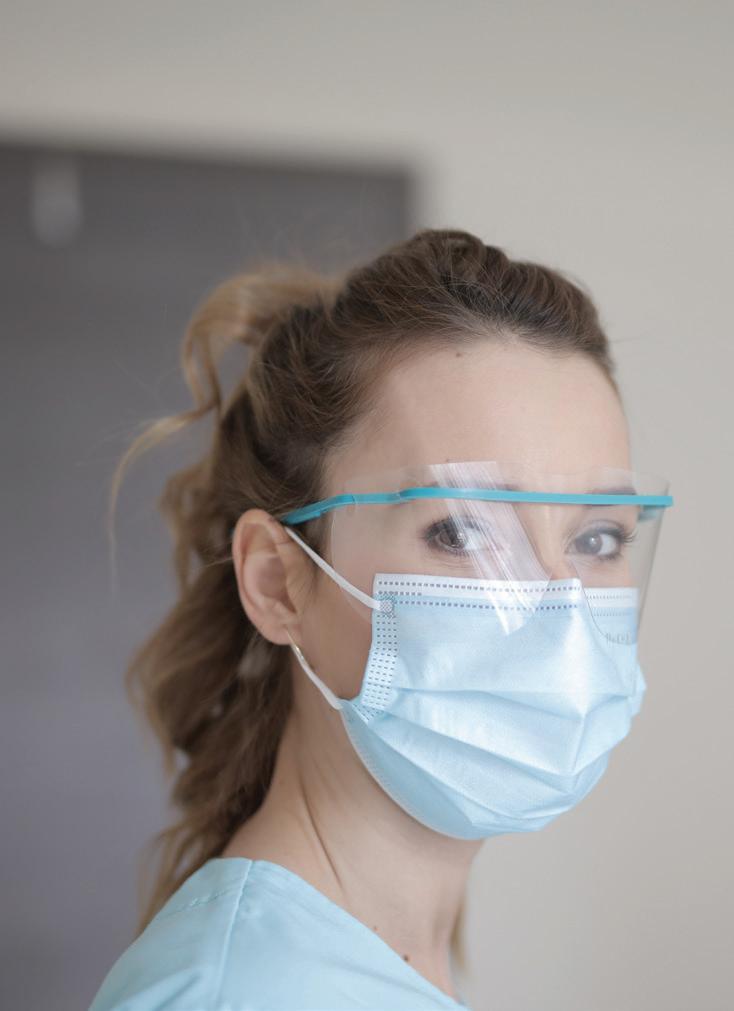
4 minute read
pRebounding
Health Care and Dental Industries Hit Hard by COVID-19 but Rebounding
In the early days of the COVID-19 pandemic, non-emergent healthcare was one of the first services to go. Ironically, while medical workers were on the front lines of battling the virus, overall patient volume decreased dramatically. According to a Crowe RCA Benchmarking analysis, by May 5, hospital revenue nationwide was dropping by an average of $1.4 billion per day.
by Heidi Smith
In Washington State, both the medical and dental industries have felt that impact. According to Paul Wilkinson, Interim Chief Executive of Providence Southwest Washington Service Area, all Providence ministries and affiliates postponed non-emergent or elective surgeries to conserve personal protective equipment (PPE), ICU beds and ventilators as well as to protect those who are immunocompromised from the risk of exposure. “Like all healthcare systems across the U.S, we’ve faced increased costs and significant decreases in regular revenue,” says Wilkinson.
Within the dental industry, volumes remain lower than average, even though nonurgent procedures are now allowed. “There was a definite chilling effect on patients, even those seeking urgent care during the early days,” says Washington State Dental Association Executive Director Bracken Killpack. “We had essentially two months where there was no dental care being performed. For general dentists during the shutdown, patient volume was probably five to ten percent of what they would typically do. Now volumes are somewhat closer to what they were pre-COVID, but there is a subset of the population who will not seek care at this time because they’re concerned.”
Unfortunately, not seeking treatment often compounds issues that may begin as relatively minor. “I’ve heard several examples of patients who started with something routine and waited,” says Killpack, “and then it became something that needed a crown and potentially a root canal.”
The same is true of routine and even emergency medical services. “Patient volumes plummeted,” Wilkinson says. “People were not utilizing the emergency services as they had in the past. We saw patients in emergent situations delaying their care and making their emergent health situations even more serious.”
Fewer patients meant less staff were needed and layoffs followed. Nationwide, dental offices lost over half a million jobs in one month, while physician offices lost another quarter of a million. Within Washington State, dental assistants ranked high among those seeking unemployment benefits.

“The impact of COVID has changed everything we traditionally thought about the infrastructure of healthcare.” says Matthews.

“We saw a lot of layoffs, but many of those people came back almost immediately once offices were able to open again,” says Killpack. “The dental industry is perhaps more resilient than some other sectors, but I definitely wouldn’t say things are back to normal.”
Melanie Matthews, Chief Executive Officer of Physicians of SW Washington (PSW), a population health company based in Olympia, WA, said, “The impact of COVID has changed everything we traditionally thought about the infrastructure of healthcare. It’s forcing us to escalate technology via telehealth options, think out-of-the-box in reaching patients to ensure care is not interrupted and how health plans can help lead the way to a new, altered future.”
To support independent physicians, many who were unable to acquire volumes needed, PSW was able to serve as a resource and distributor of Personal Protective Equipment (PPE), including gowns, masks and face shields. To support communication, PSW established communication channels to disseminate important information on telehealth, copay changes and opportunities to ease financial burdens. PSW’s Care Management and Utilization Management teams conducted personal calls to identified high-risk patients to ensure they had access to resources for food, medication and transportation; and making arrangements if they did not.
While many independent practices saw an initial drop of more than 30 percent in their practice volumes, most have regained their footing as patient visits have been increasing, said Matthews. Telehealth remains a reliable option and, in some instances, still the only choice for patients to see their health care provider.
Wilkinson believes that the healthcare industry will rebound, but the way services are delivered will look different than it did before COVID. “The pandemic has changed the way health care organizations operate,” he explains. “We adapted and found new ways to work. Many non-clinical caregivers were asked to work from home, and we found new ways to support our bedside caregivers and the community. We began seeing more patients via telemedicine in our Providence Medical Group Clinics.” At the Hawks Prairie Clinic, drive-through COVID-19 sample collection began on March 20, and the site has been seeing approximately 200 patients per day. Dental offices have adapted by staggering patient visit times and having patients remain in their cars rather than sit in waiting rooms. However, the changes are minor, according to Killpack. “Universal precautions and infection control have been a priority for dental offices for decades,” he notes. “We’re always following infection control protocols and enhancements. I’m completely confident about the safety of dental offices.”
That’s a message he hopes patients will hear, mainly as pandemicrelated stress manifests in increased incidences of cracked teeth and TMJ (Temporomandibular joint dysfunction). “Oral health is integral to overall health, and one of the ways you can keep your mouth healthy is routine care,” says Killpack. “Anything we can do to encourage people to stay on top of their preventative care is incredibly important at this time in particular.”
Wilkinson echoes that sentiment saying, “Our doctors, emergency departments, urgent cares, and other clinics are still here, virtually and in-person, to address your medical needs. Please don’t wait to get the care you need. Maintaining your health now is just as important as ever.”






